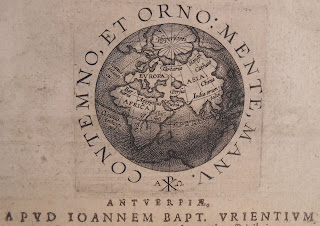 Saint-Gaudens is perhaps best known for his bronze bas-relief on Boston Common, the Robert Gould Shaw Memorial. However, we were reminded today of another influential work that Shaw completed in 1887 at the age of thirty-nine: Abraham Lincoln: The Man. Often referred to as Standing Lincoln, Shaw's massive 12-
Saint-Gaudens is perhaps best known for his bronze bas-relief on Boston Common, the Robert Gould Shaw Memorial. However, we were reminded today of another influential work that Shaw completed in 1887 at the age of thirty-nine: Abraham Lincoln: The Man. Often referred to as Standing Lincoln, Shaw's massive 12-foot statue stands on a pedestal in Lincoln Park in Chicago. Saint-Gaudens was specially selected to cast the giant monument, a fitting choice in part because the artist held the late president in high esteem and had been at his inauguration. The initial sketches that Saint-Gaudens made of the monument evince his attention to detail, all the way down to the pedestal decorations.
The influence of Standing Lincoln on both the public and other artists was significant. Numerous replicas were made and now stand in places as far-flung as London and Mexico City. Smaller replicas were cast by Saint-Gaudens' widow, Augusta, after his death and now reside in art museums all over the country. The local significance of this statue is also worth mentioning: Standing Lincoln was the first monument completed by Saint-Gaudens in Cornish, New Hampshire, where one of his friends had lured him with the promise that the area had "many Lincoln-shaped men." Saint-Gaudens would become so enamored of Cornish that he decided to establish his studio there. Saint-Gaudens' presence attracted like-minded artists that included important figures like the painter Maxfield Parrish and the American novelist Winston Churchill. The regular but informal gathering of these artists every summer eventually morphed into an extended social network that would come to be called the Cornish Colony. Today, the Saint-Gaudens National Historic Site is the only national park system site in the state of New Hampshire (other than our portion of the Appalachian Trail).
To explore the Augustus Saint-Gaudens papers, come to Rauner and ask for boxes from ML-4.




